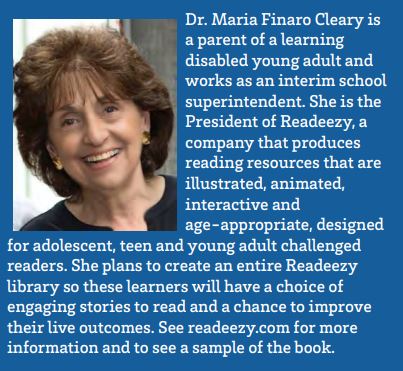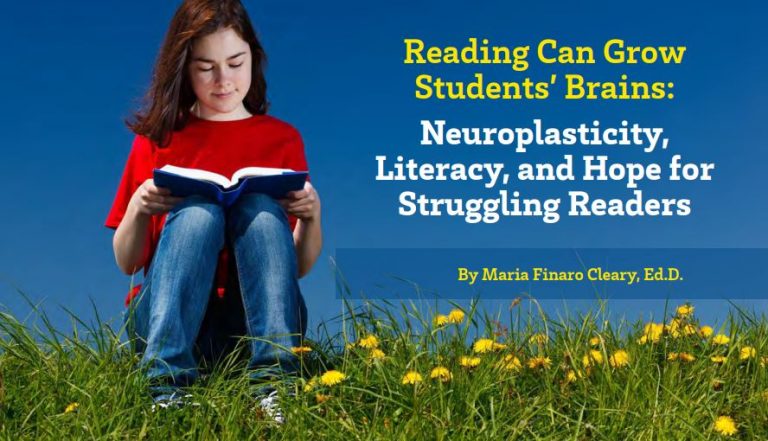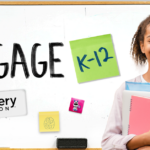By Maria Finaro Cleary, Ed.D., originally published in the October, 2021 issue of Equity & Access
They’ve Stopped Reading! Now What?
“I think I’ll go and read a book!” is not something parents or teachers of the learning disabled often hear. Why? It’s just not fun for them, especially as they grow older. In fact, adolescent to young adult challenged readers have limited choices of books that have age-respectful storylines at accessible reading levels. And very few have illustrations which these readers need to help create word pictures in their minds. Those that do are generally for juvenile readers.
So, for lack of resources, the learning disabled often lose their motivation to read once they get past the primary grades. Sadly, we have learned that the consequences are lifelong. Students
with learning disabilities experience course failure at a much higher rate than their non-disabled peers. Sixty-nine percent of students with LD have failed one or more graded courses in secondary school, compared to 47 percent of students in the general population. One third of students with LD have been held back in a grade at least once.
In terms of jobs, only 54% of working-age LD adults are employed, and 67% earned $25,000 or less per year within eight years of leaving high school (National Center for Learning Disabilities, 2017).
Our Brains Can Change
However, if we change our brains, much of this can change. Dr. Norman Doidge, a scientist, medical doctor and psychiatrist, has written extensively on the subject of neuroplasticity. This is a growing understanding that the human brain can be stimulated by conscious habits of thought and action, by teaching the brain to “rewire itself” (Doidge, 2007, 2015). The circuits of the brain can, through mental experience and activity, form, reform or even unform in new ways.
The concept of neuroplasticity has already been shaping our mental activities. Witness all the “brain games” that senior citizens are playing to keep themselves cognitively sharp. “There are a
few broad principles that we can state come out of neuroscience,” says Kurt Fischer, education professor and director of the Mind, Brain, and Education Program at Harvard University. “Number one? The brain is remarkably plastic,” Fischer explains. “Even in middle or old age, it’s still adapting very actively to its environment” (Bernard, 2010).
The implications of neuroplasticity for the learning disabled can be very encouraging, but only if they actually engage in activities that will stimulate their neural connections. However, the opposite is also true. If adolescents give up on reading once they get to middle school, the brain’s reading network will cease to develop. “When we reach adolescence, a massive ‘pruning back’ operation begins in the brain and synaptic connections and neurons that have not been used extensively suddenly die off—a classic case of ‘use it or lose it’” (Doidge, 2007). Scary indeed.
What Can We Do?
But all is not lost if we act quickly. There are interventions that can improve learner outcomes, re-engage LD students in the reading process and create the neural connections that expand brain capacity. In fact, the good news is that in cases where struggling readers have learned that their brain capacity can expand, the results have been positive, not only in their improved performance, but in their attitudes and self-image. A study found that both morale and grade points took a leap forward when students understood the idea that intelligence is pliable (Blackwell,
Trzesniewski & Dweck, 2007). Imagine being able to tell our young people that our brains can improve! Of course they’ll feel better about themselves and perhaps become more willing to actively contribute to that improvement.
That is one way to motivate our delayed learners to read more. There are two other promising resources to explore and develop further in order to address this issue: illustrations and digital media.
Pictures ARE Worth a Thousand Words
One theory for the diminishing interest in reading among LD students is the general absence of illustrations in their reading materials. Younger children with reading difficulties often find support in books with pictures that reinforce the text. Illustrations help young readers create mental images of simple story lines and well-defined characters. In many ways, pictures serve as the key to reading enjoyment for children who have difficulty turning abstract concepts into concrete thoughts.
However, there are scant resources for older readers in the form of the picture book. This audience has long outgrown the juvenile storylines and characters that mark many of the choices in this category. Illustrated books for older readers, although they do exist in the form of “Hi-Lo” stories (high interest, low reading level), are limited in number and scope. Graphic novels offer illustrations, but sometimes in a frenzied format with multiple panels on one page and dialogue bubbles advancing the story, which some learning disabled readers find confusing.
Innovative teachers (and there are so many!) can foster comprehension by finding graphic representations to “illustrate” parts of a story. Simple drawings or photos like a city, a forest, animals, a football game or a school dance can help create word pictures in the minds of students as they read. They can be projected on a white board or simply held up by the reading leader. Secondary schools with an art department can also collaborate by having art students create simple graphics, on paper or digitally, to accompany different stories. A win-win for both groups of students!
Digital Resources Can Be Our Friends
And what about creating our own “text to speech” versions of favorite books? Record the narration beforehand and have the reader follow along with the recording. Or, use some of the software that is available, often for free, on the internet. Search for “best text-to-speech software” and you’ll come up with a lot of options.
Digital media is attractive to most young people, no matter their reading level. This is an area that is ripe for improvement when it comes to older readers. That’s why we’ve created Readeezy specifically for adolescent through young adult challenged readers. Right now, it’s one book that’s illustrated, animated and interactive with age-appropriate storylines and accessible reading levels. The plan is to create an entire library so this special group of readers can visit one place to enjoy a good book. Visit readeezy.com to see a book sample and research that’s shown remarkable results.
 We now know that reading can, in fact, grow our brains which has enormous implications for our struggling readers. Publishers and developers must explore innovative changes to their offerings for older, delayed readers. Educators and parents will serve these teens and young adults well by seeking out and requesting resources that are age-appropriate in an illustrated, interactive digital format. Those with learning disabilities continue to require intelligent and informed advocates to increase their opportunities for life success.
We now know that reading can, in fact, grow our brains which has enormous implications for our struggling readers. Publishers and developers must explore innovative changes to their offerings for older, delayed readers. Educators and parents will serve these teens and young adults well by seeking out and requesting resources that are age-appropriate in an illustrated, interactive digital format. Those with learning disabilities continue to require intelligent and informed advocates to increase their opportunities for life success.
The American Consortium for Equity in Education, publisher of the "Equity & Access" journal, celebrates and connects the educators, associations, community partners and industry leaders who are working to solve problems and create a more equitable environment for historically underserved pre K-12 students throughout the United States.
- American Consortium for Equity in Educationhttps://ace-ed.org/author/admin/
- American Consortium for Equity in Educationhttps://ace-ed.org/author/admin/April 23, 2025
- American Consortium for Equity in Educationhttps://ace-ed.org/author/admin/
- American Consortium for Equity in Educationhttps://ace-ed.org/author/admin/







